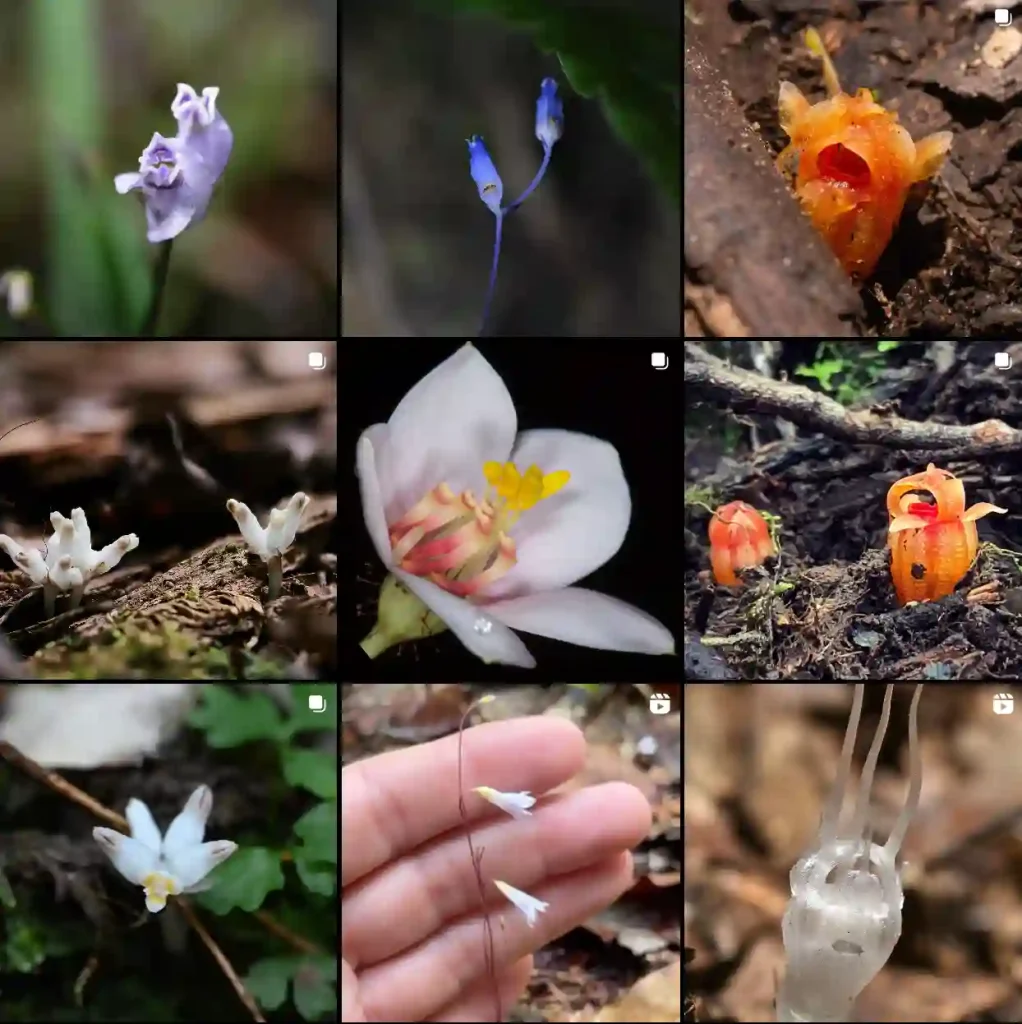
August 21 – Lindera
"Lindera, the spicebush, represents August 21."
Lindera symbolizes renewal and adaptability. You have a vibrant energy that revitalizes those around you. Like the spicebush's aromatic presence, you bring warmth, comfort, and a sense of renewal to every situation.
Lindera: A Genus of Aromatic Wonders
My name is Ferb Vu, and I’m fascinated by the genus Lindera, a group of plants belonging to the laurel family, Lauraceae. These plants, commonly known as spicebush, spicewood, or Benjamin bush, are renowned for their aromatic leaves and berries. They are primarily found in eastern Asia, with a few species native to North America. As an enthusiast of botany and natural history, I find the diversity and ecological importance of Lindera particularly captivating.
Diverse Species and Characteristics
The genus Lindera encompasses a wide array of species, each with unique characteristics:
- Lindera aggregata (Sims) Kosterm.
- Lindera akoensis Hayata
- Lindera andamanica Chakrab., Lakra & Diwakar
- Lindera angustifolia W.C.Cheng
- Lindera annamensis H.Liu
- Lindera apoensis Elmer
- Lindera assamica (Meisn.) Kurz
- Lindera balansae Lecomte
- Lindera benzoin (L.) Blume – Plant FAQs: Lindera Benzoin – Northern Spicebush
- Lindera bibracteata Boerl.
- Lindera bokorensis Tagane & Yahara
- Lindera bootanica Meisn.
- Lindera caesia Reinw. ex Fern.-Vill.
- Lindera caudata (Nees) Hook.f.
- Lindera chienii W.C.Cheng
- Lindera chunii Merr.
- Lindera citriodora (Siebold & Zucc.) Hemsl.
- Lindera communis Hemsl.
- Lindera concinna Ridl.
- Lindera cuspidata (Blume) Boerl.
- Lindera delicata Kosterm.
- Lindera densiflora (Meisn.) Boerl.
- Lindera doniana C.K.Allen
- Lindera erythrocarpa Makino
- Lindera flavinervia C.K.Allen
- Lindera floribunda (C.K.Allen) H.P.Tsui
- Lindera foveolata H.W.Li
- Lindera fragrans Oliv.
- Lindera glauca (Siebold & Zucc.) Blume
- Lindera gracilipes H.W.Li
- Lindera guangxiensis H.P.Tsui
- Lindera insignis (Blume) Boerl.
- Lindera kariensis W.W.Sm.
- Lindera kinabaluensis Kosterm.
- Lindera kochummenii de Kok
- Lindera kwangtungensis (H.Liu) C.K.Allen
- Lindera latifolia Hook.f.
- Lindera laureola Collett & Hemsl.
- Lindera limprichtii H.J.P.Winkl.
- Lindera longipedunculata C.K.Allen
- Lindera longistaminata (H.Liu) Dao
- Lindera lucida (Blume) Boerl.
- Lindera lungshengensis S.Lee
- Lindera macrophylla (Blume) Boerl.
- Lindera malaccensis Hook.f.
- Lindera megaphylla Hemsl.
- Lindera meissneri Hook.f.
- Lindera melastomacea Fern.-Vill.
- Lindera melissifolia (Walter) Blume
- Lindera menghaiensis H.W.Li
- Lindera metcalfiana C.K.Allen
- Lindera montana Ridl.
- Lindera montanoides Kosterm.
- Lindera motuoensis H.P.Tsui
- Lindera myrrha (Lour.) Merr.
- Lindera nacusua (D.Don) Merr.
- Lindera neesiana (Wall. ex Nees) Kurz
- Lindera novoguineensis Kosterm.
- Lindera obtusiloba Blume
- Lindera pedicellata Kosterm.
- Lindera pentantha Koord. & Valeton
- Lindera pilosa Kosterm.
- Lindera pipericarpa (Miq.) Boerl.
- Lindera polyantha (Blume) Boerl.
- Lindera praecox (Siebold & Zucc.) Blume
- Lindera prattii Gamble
- Lindera pulcherrima (Nees) Benth. ex Hook.f.
- Lindera queenslandica B.Hyland
- Lindera racemiflora Kosterm.
- Lindera racemosa Lecomte
- Lindera reflexa Hemsl.
- Lindera reticulata (Blume) Benth. & Hook.f. ex Fern.-Vill.
- Lindera robusta (C.K.Allen) H.P.Tsui
- Lindera rubronervia Gamble
- Lindera rufa (Stapf) Gamble
- Lindera salicifolia (Blume) Boerl.
- Lindera sanjappae Bhaumik, M.K.Pathak & Chakrab.
- Lindera sericea (Siebold & Zucc.) Blume
- Lindera setchuenensis Gamble
- Lindera spicata Kosterm.
- Lindera spirei A.Chev. ex H.Liu
- Lindera subcoriacea Wofford
- Lindera supracostata Lecomte
- Lindera thomsonii C.K.Allen
- Lindera tienchuanensis W.P.Fang & H.S.Kung
- Lindera tonkinensis Lecomte
- Lindera triloba (Siebold & Zucc.) Blume
- Lindera turfosa Kosterm.
- Lindera umbellata Thunb.
- Lindera varmae M.K.Pathak, Bhaumik & Chakrab.
- Lindera velutina H.Liu
- Lindera villipes H.P.Tsui
- Lindera wardii C.K.Allen
- Lindera wrayi Gamble
Ecological Significance
Lindera species play a crucial role in their respective ecosystems. Their flowers provide nectar and pollen for various pollinators, including bees, butterflies, and moths. Their fruits are an important food source for birds and other wildlife. Moreover, the aromatic leaves and stems of some species have been traditionally used for medicinal and culinary purposes.
For instance, the leaves and twigs of Lindera benzoin were used by Native Americans to make a tea for treating colds, fevers, and rheumatism. The berries were also used as a spice and for making a fragrant oil. In Japan, the young leaves of Lindera obtusiloba are consumed as a vegetable, and the wood is used for making crafts.
Conservation Concerns
Despite their ecological and cultural importance, some Lindera species are facing threats due to habitat loss, overexploitation, and climate change. The rare Lindera melissifolia, for example, is considered endangered due to the destruction of its wetland habitat. Conservation efforts are crucial to ensure the survival of these valuable plants and preserve their ecological and cultural significance for future generations.
Personal Reflections
I am continually amazed by the beauty and diversity of the plant kingdom, and the genus Lindera holds a special place in my heart. I admire their resilience, their adaptability, and their contributions to the ecosystems they inhabit. I believe that by understanding and appreciating these plants, we can foster a deeper connection with the natural world and inspire greater efforts to protect and conserve our planet’s biodiversity.
In my own garden, I have cultivated several Lindera species, enjoying their fragrant foliage and observing the wildlife they attract. I find their presence to be both calming and invigorating, a reminder of the intricate connections that exist within the natural world. I encourage others to explore the wonders of Lindera and discover the unique beauty and ecological significance of these remarkable plants.
If i die, water my plants!



